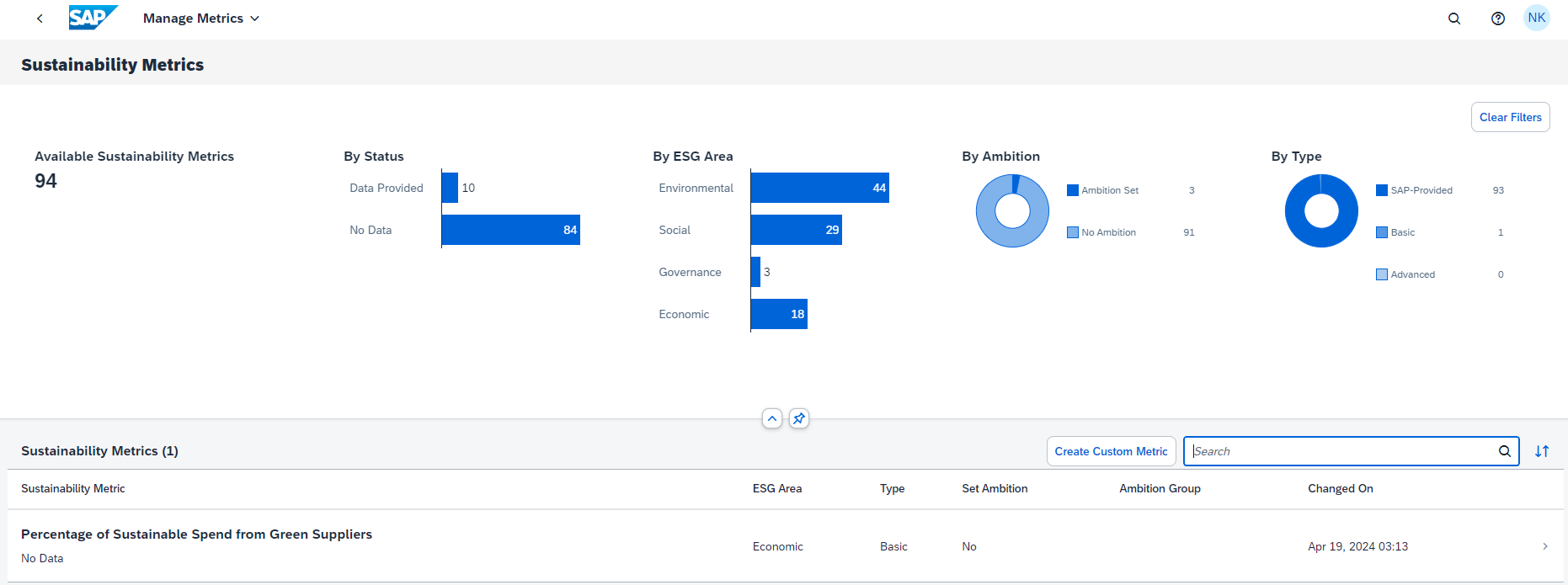In a previous blog, Deloitte highlighted the importance of sustainable procurement at the core as one of the key takeaways of the Digital Procurement world conference. In today’s world, sustainability is one of the most important topics that needs to be addressed by procurement leaders and practitioners. The social and environmental impact is a more important factor than ever in sourcing and operational procurement. ESG Regulations fast forward the need for sustainability reporting in the procurement process. SAP Recognizes the importance of sustainability and introduced several products and features to support companies with these challenges. Deloitte is incorporating these products into SAP implementations and investing in its assets such as D-Carb, a solution to integrate sustainability into supply chain planning.
In a two-part blog series, we will cover the products and features SAP has developed to support companies in their journey toward sustainable procurement. In this blog, we will cover two SAP products that can support companies in their journey toward sustainable procurement.
Sustainability Control Tower
One of the products SAP introduced is SCT (Sustainability Control Tower). SCT is a blanket solution designed to enhance environmental, social, and governance (ESG) transparency and performance. It enables businesses to monitor and manage their sustainability goals. It provides a platform for recording, reporting, and acting on sustainability goals at scale.
SCT is like a central command center for all sustainability data. It gathers information and provides real-time visibility into the environmental, social, and ethical aspects of the supplier’s supply chain. It acts as a comprehensive monitoring and management tool, allowing you to track key sustainability metrics, such as carbon emissions, water usage, and labor standards compliance, across your entire procurement process.
SCT helps to comply with various ESG reporting frameworks and regulations such as the Task Force on Climate-Related Financial Disclosures (TFCD), the EU Taxonomy, and the Corporate Sustainability Reporting Directive (CSRD). The solution offers 37 sustainability metrics on pre-built data models supporting established reporting frameworks, as well as extensible data models based on SAP and third-party structured and unstructured data. Additionally, SCT integrates with SAP S/4HANA procurement data, allowing you to extend your analysis and create bespoke sustainability metrics relevant to your buying practices.

Procurement-Focused Sustainability Metric: Percentage of Sustainable Spend from Green Suppliers
One such custom metric you can create within SCT is the Percentage of Sustainable Spend from Green Suppliers. This metric focuses on the portion of your total procurement spending that goes toward suppliers with strong sustainability practices.
Sustainability Footprint Management
SAP Sustainability Footprint Management (SFM) allows businesses to calculate their carbon footprint across the value chain, from production to delivery, integrating the supplier data and existing ERP business data for accurate emissions calculation and management. SFM supports profitable, low-carbon business models by providing transactional carbon accounting, which is essential for decarbonizing the value chain.
SFM focuses on the environmental footprint of the products. Imagine you are a chef trying to understand the impact of your restaurant on the environment. SAP SFM is like a comprehensive cookbook that not only lists all the ingredients (raw materials) you use but also tells you how much water, energy, and land each ingredient requires. It is like having a detailed breakdown of the ‘environmental recipe’ for each dish you serve.
SFM helps in assessing and managing the sustainability performance of the suppliers. It evaluates suppliers based on predefined sustainability criteria, such as environmental certifications, labor practices, and product recyclability, and tracks their compliance over time.
SFM helps to comply with various government regulations related to emissions and permits, such as the EU Emissions Trading System (ETS), the UK Carbon Tax, and the California Cap-and-Trade Program.
SFM and SCT: A Sustainability Powerhouse
Both SFM and SCT empower businesses on their sustainability journey. They track greenhouse gas emissions (transactional carbon accounting) and provide data-driven insights for informed decision-making.
- SFM Data Collector: Focuses on product footprints using lifecycle data. It’s like a fitness tracker, measuring your environmental impact.
- SCT: Data Analyzer & Coach: Analyzes SFM data, assesses supplier sustainability (questionnaires, databases), and suggests improvement actions. Think of it as the app analyzing your fitness data and proposing workout tweaks.
Together, SFM delivers the raw environmental data, and SCT helps you understand and act on it for greater sustainability. In essence, SFM calculates footprints, and SCT manages sustainability performance (including Scopes 1, 2, and 3 emissions).
Get in Touch
This blog gives an overview of two of the most important products SAP has developed to enable sustainable procurement. If you want to learn more about these products, contact us, and we are happy to discuss the possibilities. In the second part of this blog series, we will discuss some of the sustainability features SAP has introduced for SAP S/4HANA and SAP Ariba.